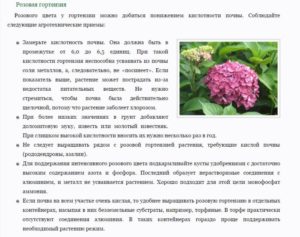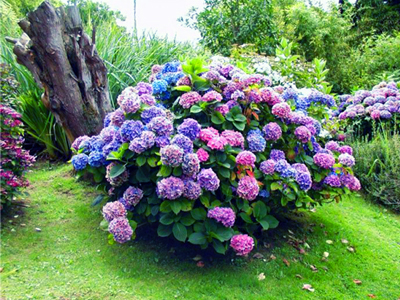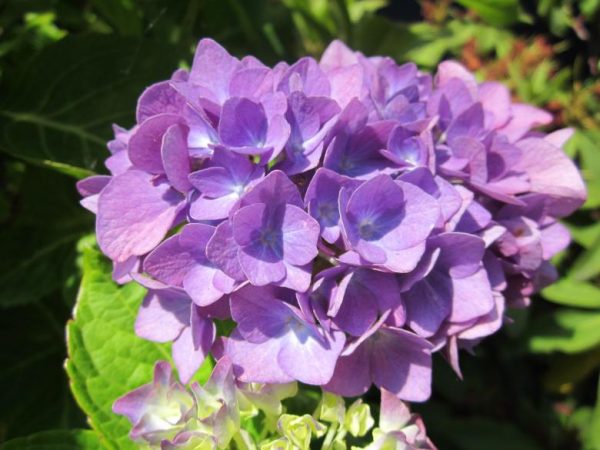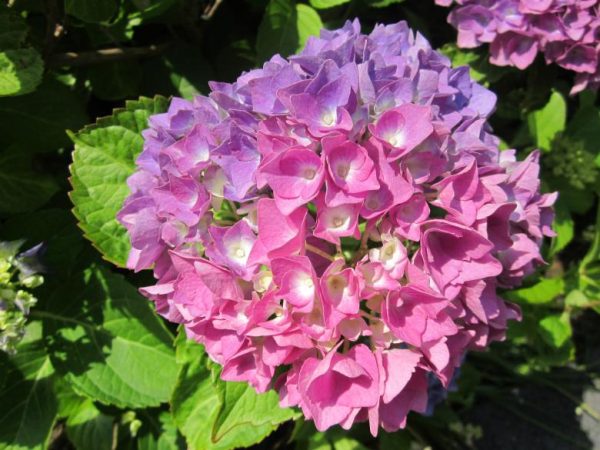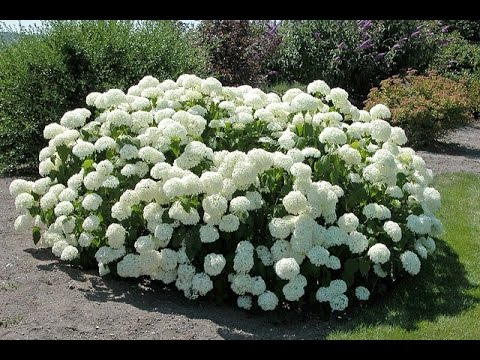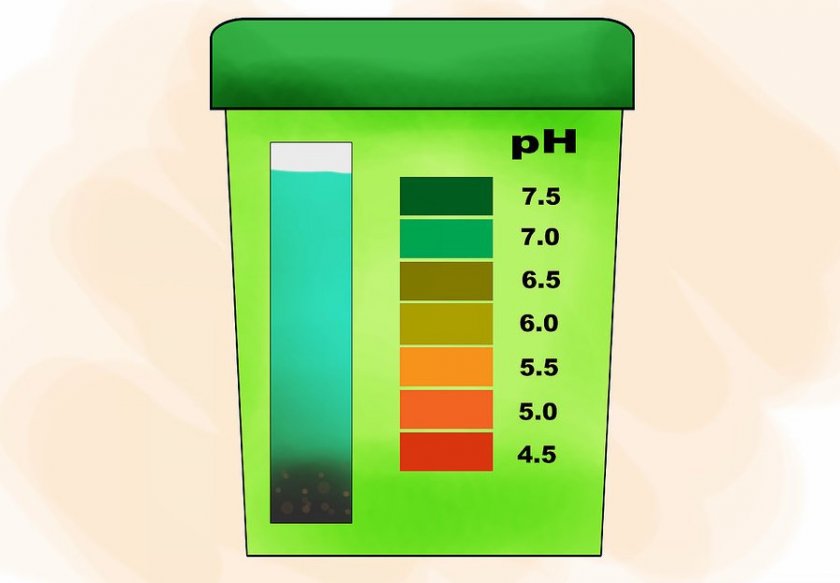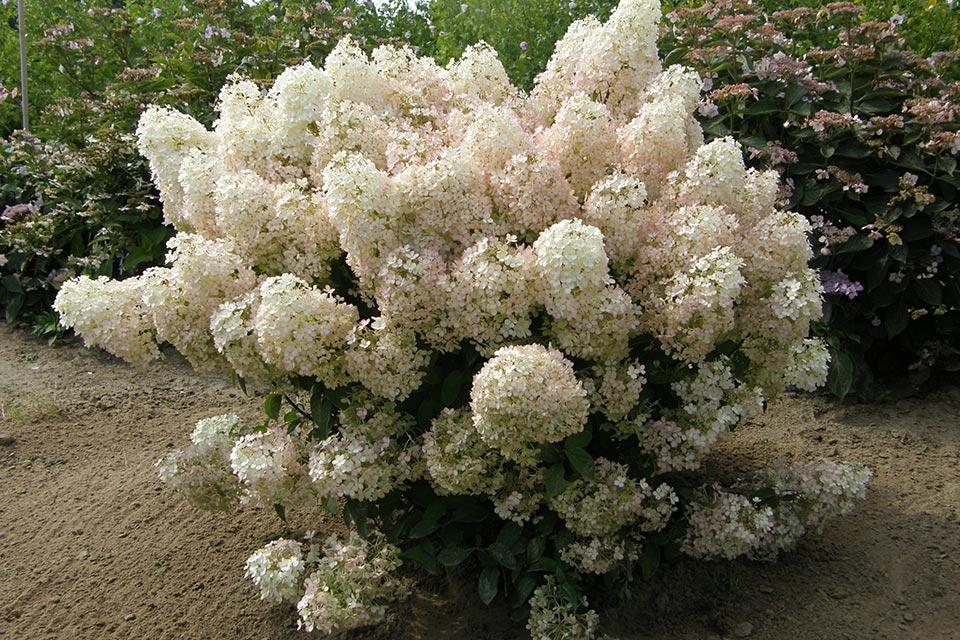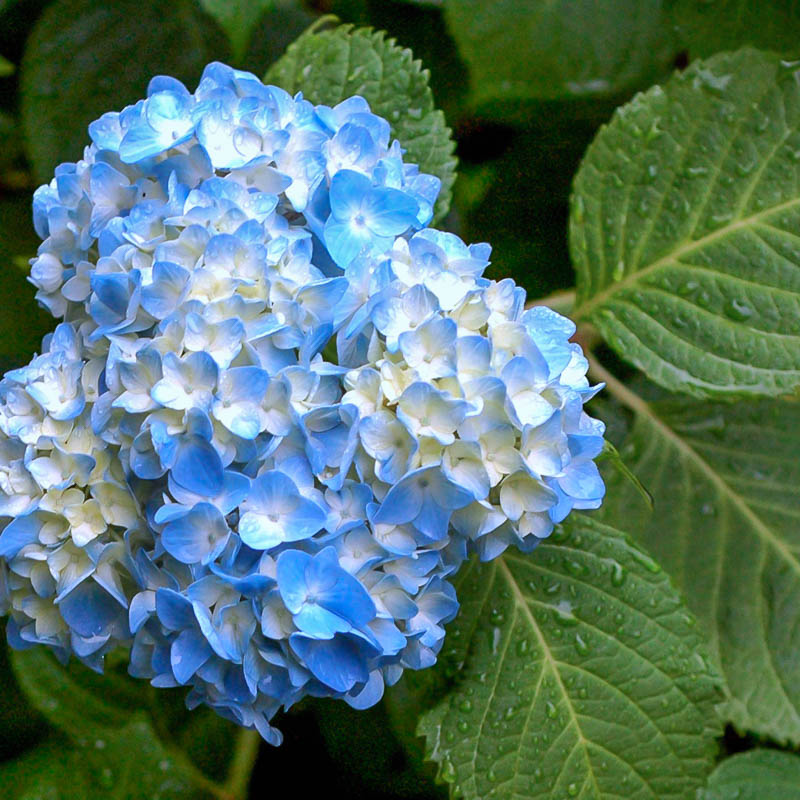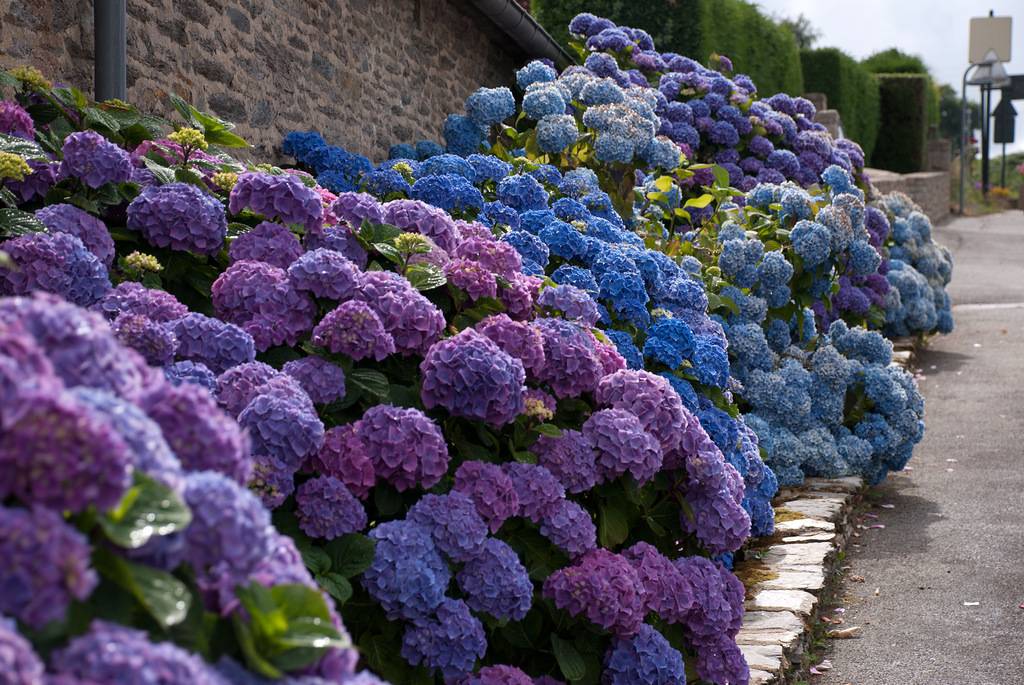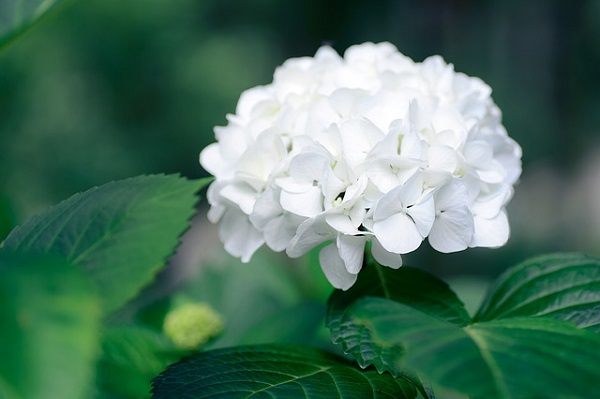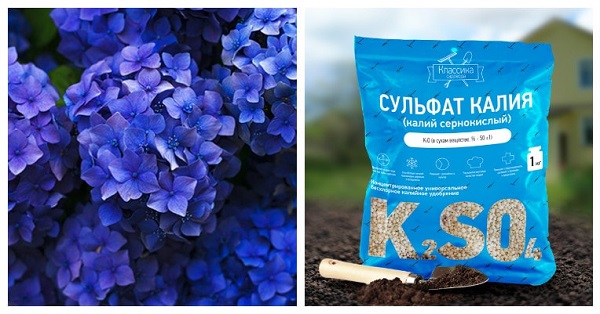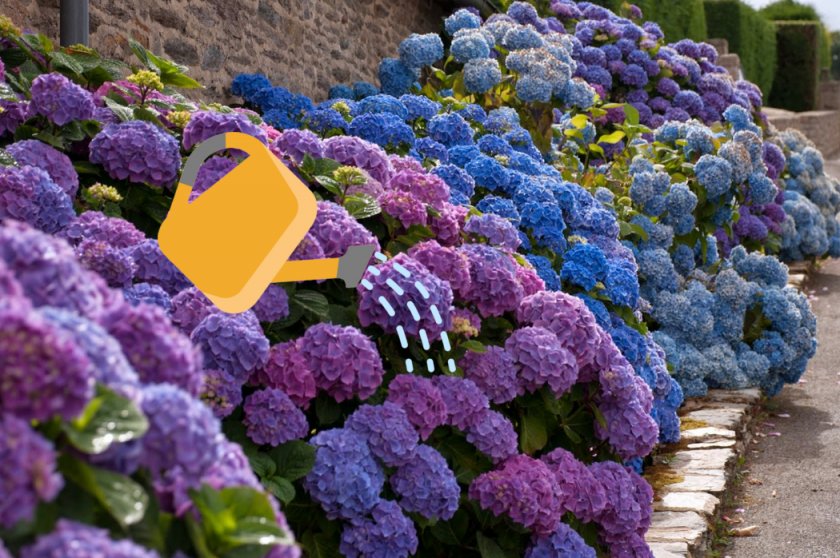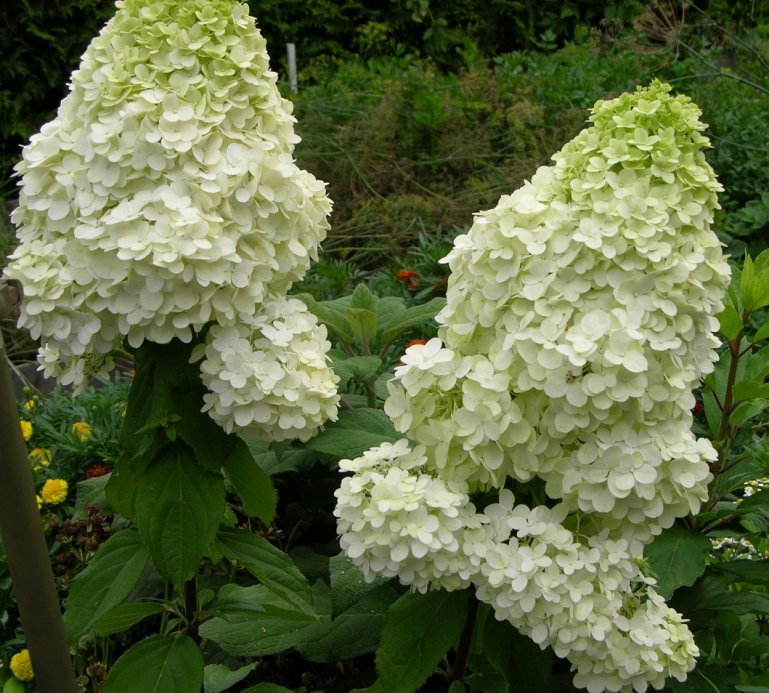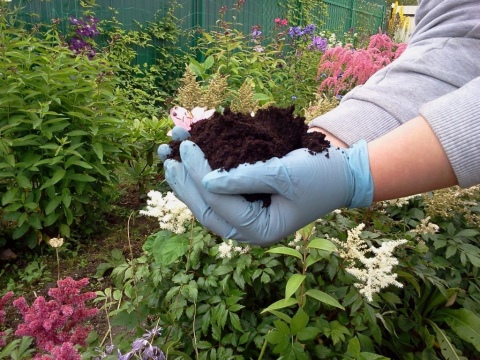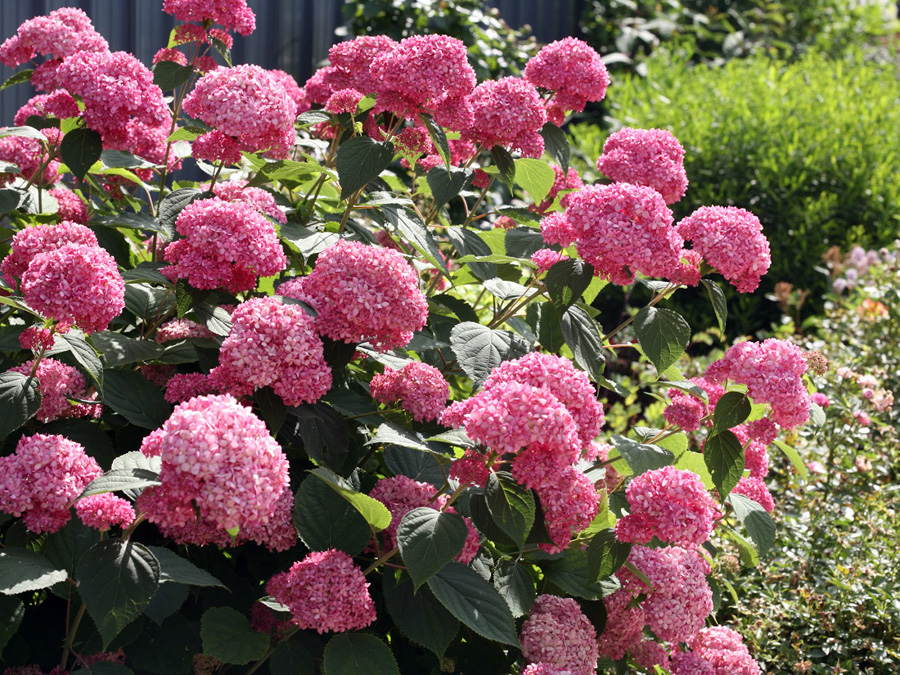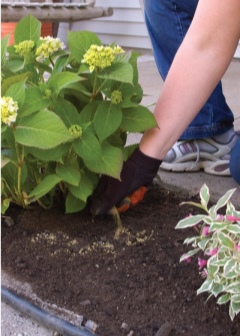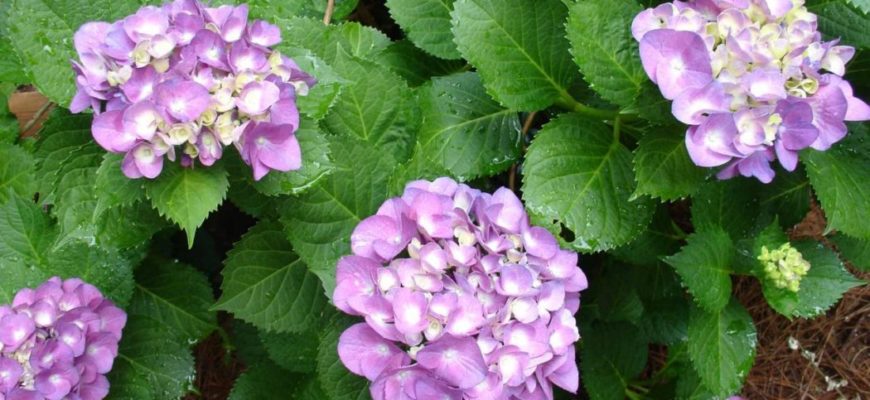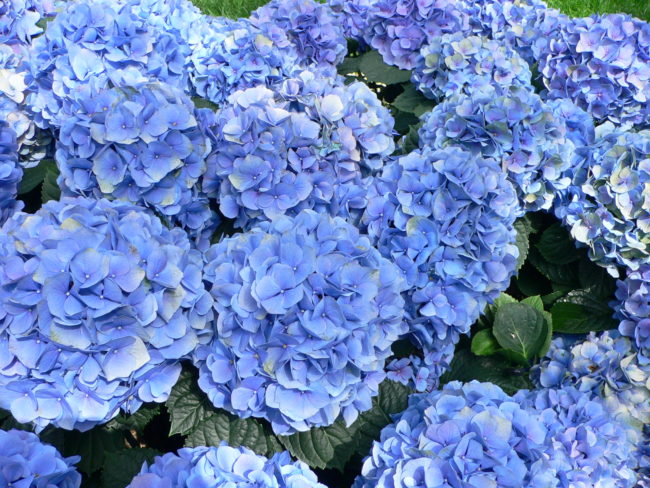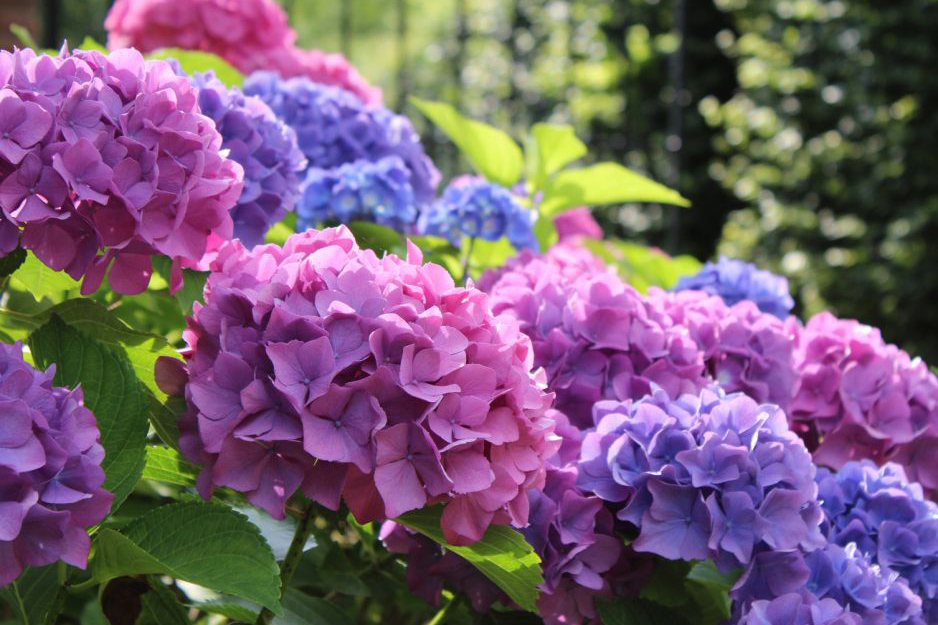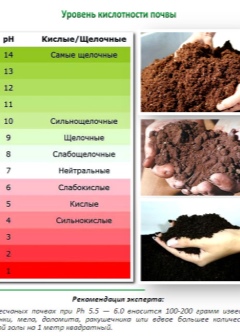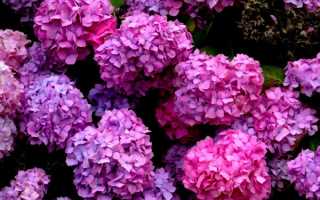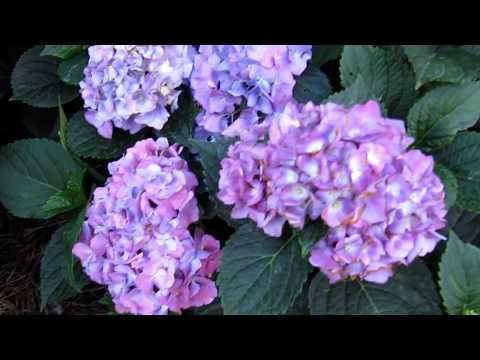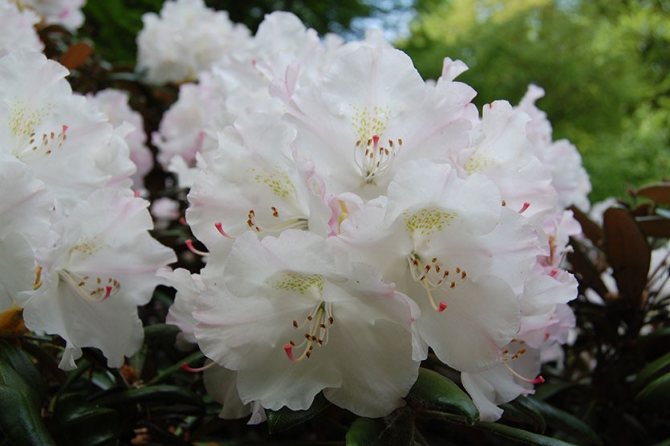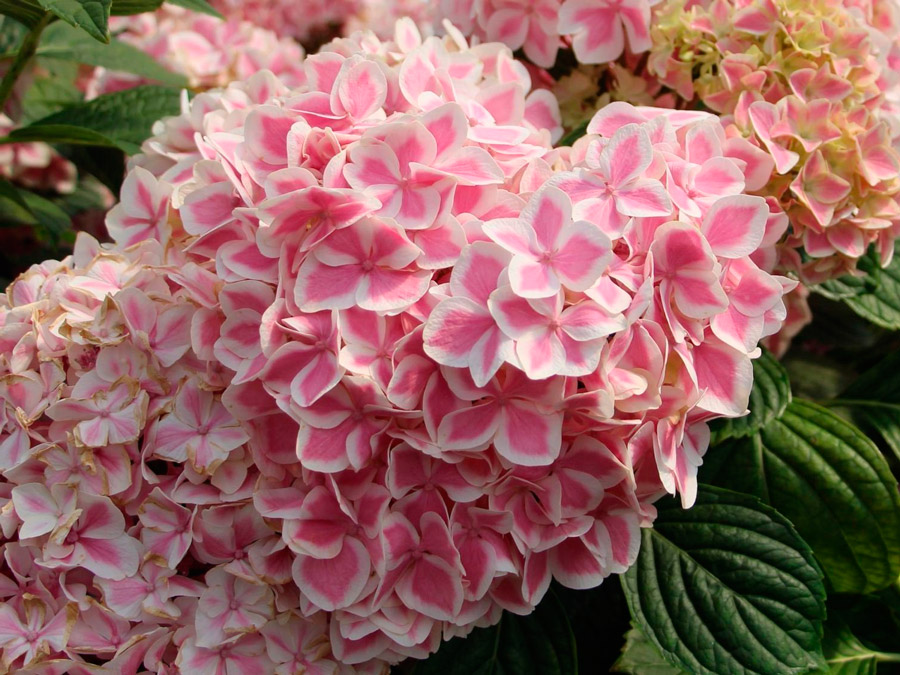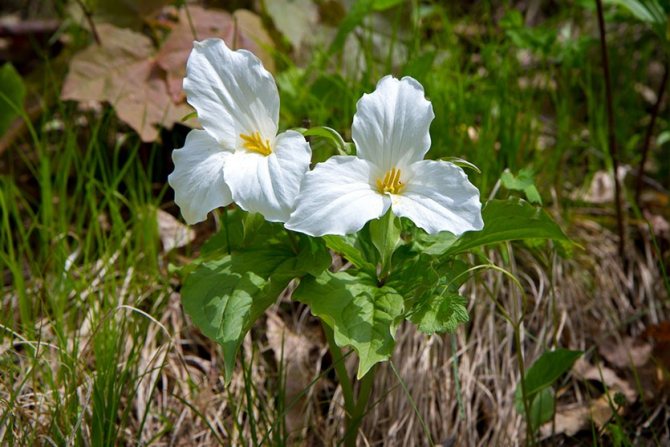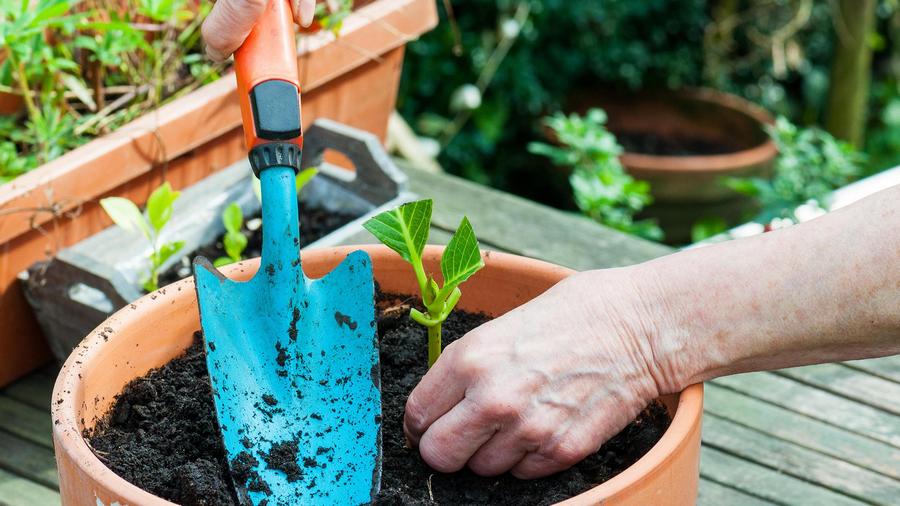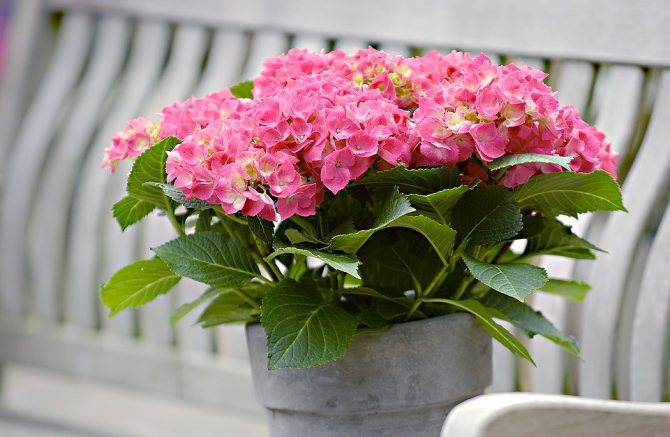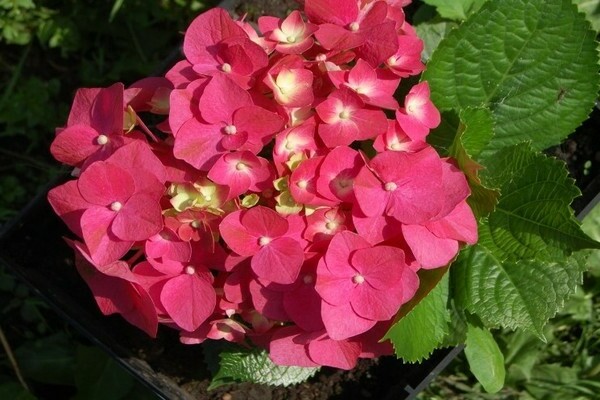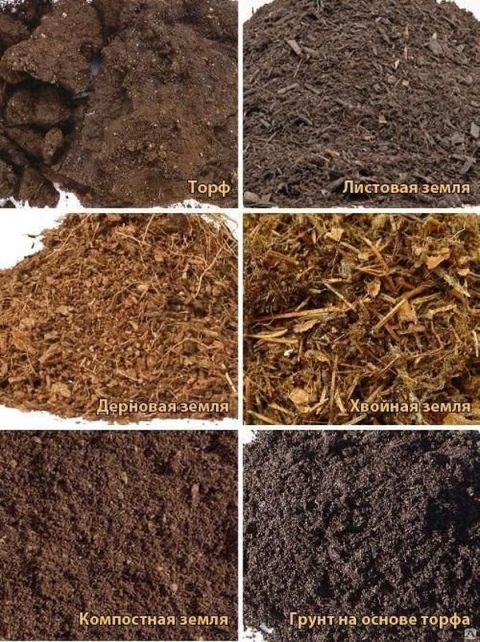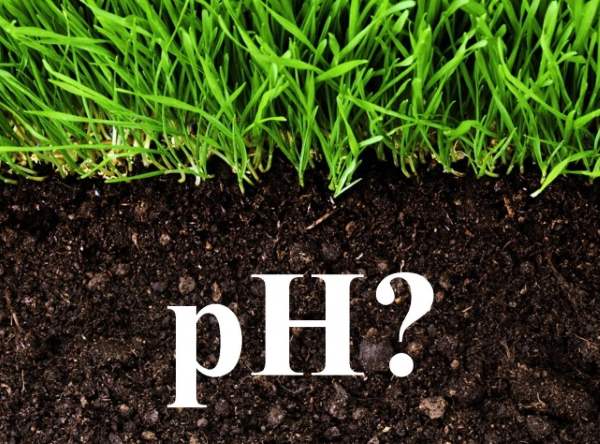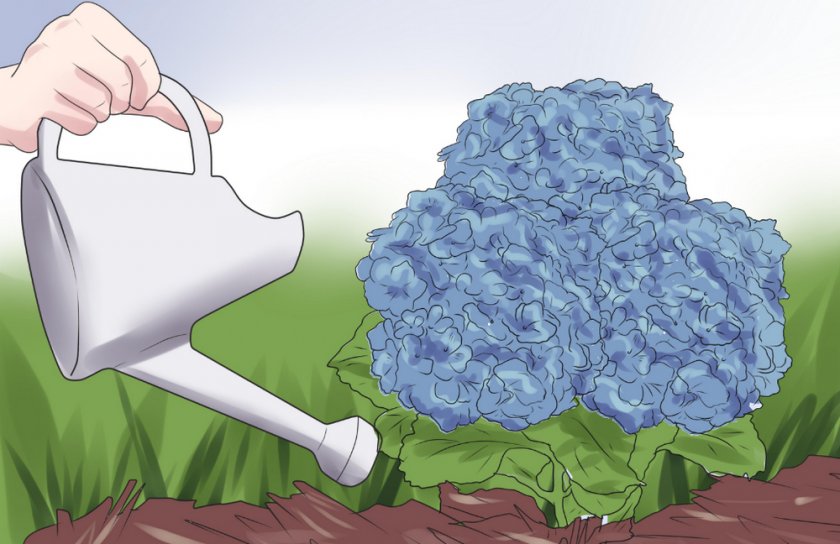Hydrangea - growing and care
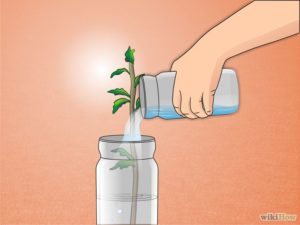
Hydrangea is a perennial ornamental and incredibly beautiful shrub. Hydrangea translated from Greek means "a barrel of water", otherwise hydrangea is called "hydrangea" (hydrangea), which means "a vessel of water" from Latin. This shrub is indeed a very moisture-loving plant.
There are more than 80 types of hydrangea in the world and it is not only shrub, but also in the form of trees and even lianas. Growing and caring for hydrangea is not difficult, although it has a number of features.
Hydrangea looks beautiful in front of the entrance to the house, near the summer pavilions, next to the fences. She can play a major role in a flower garden among other perennial plants. You can see a selection of photos of garden design with hydrangea.
Growing
Growing hydrangeas is not at all troublesome. Hydrangea grows well in acidic soils.
She loves sunny places, but direct sunlight is contraindicated for her; therefore, the shrub is suitable for semi-shady places in the garden.
The optimum temperature for hydrangea flowering is 15 ° C - 20 ° C, at this temperature the flowers can last for about 15 days. If the temperature is higher, then flowering stops.
Do not flood the plant, but keep the soil under the hydrangea moist at all times - this is the key to abundant flowering. For this, the ground under the bush can be mulched, for example, with sawdust.
And so that the water gets to the roots, make punctures in the soil.
I cut the weeds with a trimmer and leave it lying under the hydrangea, so the soil remains constantly moist, thus getting rid of excess watering, and the weeds, rotting, also provide nutrition to the bush.
Since hydrangea is a southern beauty, it can freeze out in our Northwest climate. I do not cover the hydrangea for the winter, and when this happened to me for the first time, I was very upset, but ... I didn’t do anything.
And after a while my hydrangea grew, gave new branches, bloomed with magnificent caps. Therefore, my advice: if you have such a nuisance, do not be upset - the hydrangea will recover on its own.
But now, if you do not have an umbrella hydrangea, like mine, but a weaving one, then, having removed its vines from the supports in the fall, cover the bush with spruce branches and on top with lutrasil.
Top dressing
You can feed the hydrangea three times per season. When growing green leaves, during budding and in autumn after flowering and drying of the leaves.
Remember that hydrangea does not like alkaline soils (by the way, like rhododendrons), so do not use ash as a top dressing. Feed on your choice - urea, nitrophos, azofos, fertilizer, such as "Kemira".
You can even acidify the soil under the bush with ordinary needles from a Christmas tree, pine, thuja, or, for example, with ordinary citric acid 1 tsp per 10 liters of water.
I combine the first and last feeding with the prevention of diseases and pests, spilling and spraying with Fitosporin, Fitoverm and Zircon.
Sometimes hydrangea leaves suddenly begin to become covered with yellow spots, and it happens that the border on them also turns yellow - this means one thing - a lack of potassium.
Urgently feed the bush with any potash fertilizer (not ash): 1 tbsp of fertilizer per 10 liters of water per 1 bush.
Now there are special fertilizers for different types of plants, if funds allow you, then buy such a complex fertilizer for hydrangeas or for decorative flowering shrubs and feed according to the instructions.
Another small recommendation: if you want to get huge caps of inflorescences, feed the hydrangea with slurry. Just keep in mind that overfeeding, large flowers can break branches with their weight.Below are just photos of my hydrangeas, which I feed with diluted manure a couple of times before flowering: the first one is still in the snow.
Advice.
For the Northwest region, it is better to buy and plant hydrangeas in the spring. I recommend buying seedlings with closed root systems only. But if you bought a hydrangea with open roots, then before planting, shorten them, pollinate them with "Kornevin" and cut annual shoots, if any, up to 3 buds. In this form, it will be easier for the seedling to take root.
What can replace vinegar
There are several options for replacing vinegar:
Organic
leaf compost;
rotted sawdust and coniferous litter;
peat moss (sphagnum);
manure (only fresh).
1. Acidification is slow.
2. The effect remains for a long time.
3. Keeps the soil loose, nourishing it with additional minerals.
Minerals
ammonium sulfate;
ammonium nitrate;
ferrous sulfate;
potassium sulfate;
colloidal sulfur.
1. Significantly increases acidity in a short time.
2
Chemicals are used with caution, as they can cause the opposite effect.
Siderata
oats;
lupine;
soy;
mustard;
rape.
1. Planting such plants near hydrangeas maintains the acidity of the soil.
How to make the right composition?
The soil for indoor and garden plants may differ, in addition, for different varieties of hydrangea, you need to choose the right composition. For example, tree-like crop species are more unpretentious to the quality of the land, they can grow and bloom remarkably on loamy soils, the main thing is that it optimally allows water and air to pass through, and this requires a drainage layer.
In particular, a species such as hydrangea can grow even in the presence of a small amount of lime in the ground, while for other varieties this can cause disease. Most of all, loose compositions with an acidity of no more than 6.5 units are suitable for woody varieties, but humus from the fallen needles of pine, larch or fir must be added to them.
For large-leaved hydrangeas, you need to choose a location next to conifers such as juniper, thuja, and heather plants. The composition of the soil mixture for these varieties should include peat, sod and leafy soil, sand and humus.
Panicle hydrangeas love loamy compositions, and for their planting, as a rule, equal parts of coniferous compost, peat and brown forest land are used. But they also need artificial acidification.
It is important to consider all these points at the same time when a street hydrangea is planted, you need to carefully prepare the land for planting:
it needs to be dug deep enough and enriched with a peat mixture, humus and mineral additives;
place a layer of gravel, expanded clay and sand at the bottom of the hole;
the nutrient substrate should consist of coarse sand, clay and black soil in combination with sod soil;
it is necessary to plant the plant after the soil has been acidified with special preparations, vinegar solution or ammonium sulfate;
it is important to mulch the surface of the near-stem zone after planting with compost or peat - this will retain water and prevent drying out.
Constant acidification as the crop grows is important, as well as fertilization throughout the growing season. The best option is to add useful trace elements and organics to the soil every 2 weeks.
What to do to avoid soil problems
You can ensure the normal growth of hydrangea bushes if you follow the rules for caring for the plant. They are as follows:
- Timely feeding. To do this, it is better to use complex compounds containing such important elements as potassium, iron, zinc and others.
- During the flowering period, fertilizing should be carried out twice a month. The exception is too hot days.
- Periodic loosening of the earth around the hydrangea bush.This will allow the roots to receive the oxygen necessary for development.
- Watering after the topsoil dries up.
In the gardens of the middle lane, not all types of plants can take root. This must be taken into account when deciding which soil and growing method for hydrangeas to choose. Because if the variety is not suitable, no amount of nutritious soil will help.
Important! It is strictly forbidden to use fresh organic matter for feeding - this will slow down the flowering process. Treelike, paniculate, large-leaved and other varieties have their own growing characteristics and not all of them can survive difficult climatic conditions
Therefore, it is necessary to help the plantings adapt to new conditions, protecting them from heat and severe cold.
Treelike, paniculate, large-leaved and other varieties have their own growing characteristics and not all of them can survive difficult climatic conditions. Therefore, it is necessary to help the plantings adapt to new conditions, protecting them from heat and severe cold.
The most popular are paniculate varieties. Therefore, for many gardeners it is of interest what kind of soil the panicle hydrangea loves. With normal care, such a bush is able to develop a powerful root system. But even this rather unpretentious flower may not bloom due to illness, improper watering and too alkaline soil. If all these negative factors are excluded, then the flowering will be lush and long.
The soil chosen for planting hydrangeas must meet certain criteria. If they are not taken into account, the plant will be sick and grow poorly. Many gardeners choose a ready-made substrate, depending on what kind of soil the hydrangea cultivar may prefer. But most make it themselves from peat, sand and rotted leaves. If you add the right care, feeding and watering, the plant will thank you with a beautiful and lush flowering.
Soil acidification for hydrangeas
Hydrangea is one of the most beautiful flowering shrubs, but in order for it to develop and bloom well, it needs to create all the conditions. And first of all - to increase the acidity of the soil to the required level, because hydrangea prefers acidified soil, and does not develop well on alkaline soil.
Florists know that the composition and acidity of the soil affect not only the health of the hydrangea, but also the color of its inflorescences. You can get the desired color, or several colors, by raising or lowering the pH level of the soil.
So, hydrangea growing on acidic soil at pH 3-6 has blue, blue or purple inflorescences. The neutral acidity of the soil makes it possible to grow white flowers. Alkaline soil is the basis for growing hydrangeas with inflorescences of a pale pink color. To obtain this effect, it is necessary to maintain the pH at the same level from early spring until the end of flowering.
Sometimes gardeners plant two hydrangea bushes side by side in the garden, but one in a container with acidic soil, and the other in an alkaline soil. The result is a real bouquet of multi-colored inflorescences.
A similar result can be achieved by planting one bush so that different parts of its roots are in different soil substrates, receive different nutrients and provide different colors to the inflorescences.
You can determine the acidity level of the soil by means of litmus paper, or by folk remedies - using vinegar or baking soda. From vinegar, bubbles appear on alkaline soil, from a solution of soda and water, fireworks from bubbles form on acidic soil.
There are many ways to acidify the soil. The soil can be acidified with an electrolyte, which is essentially diluted sulfuric acid. Sulfur is useful for hydrangeas no less than acid, it is a valuable nutrient that accelerates metabolic processes in plant tissues.
The solution must be made at the rate of 1 ml of electrolyte per 1 liter of water.If you add a small amount of ammonium nitrate to this solution, you get an acidic and nutritious hydrangea broth. One bush will need 5-6 liters of such a solution, for watering every 10-15 days.
A solution for acidifying the soil can only be made from pure, unused electrolyte, heavy metals and lead accumulate in the waste, which contaminate the soil.
It is necessary to acidify the soil not only for hydrangeas, but also for other plants for which alkaline soil is not suitable - for azaleas, rhododendrons, and quince.
Another proven folk remedy for acidifying the soil is a citric acid solution made from 1 teaspoon of acid in 10 liters of water. Instead of citric, you can use other acids - acetic, oxalic, malic.
A solution of potassium nitrate (potassium nitrate) will also help acidify the soil for hydrangeas. It is prepared in proportions of 20 grams per 10 liters of water, after which it is necessary to carry out foliar top dressing with iron sulfate - 40 grams is dissolved in 10 liters of water and the bush is sprayed with it.
In addition to these funds, you can make the soil for hydrangeas more acidic with fertilizers such as potassium sulfate, iron vitriol, ammonium sulfate.
The soil is also acidified with the help of organic fertilizers - peat, compost, pine and spruce needles. With needles and cones, you can mulch the soil under a hydrangea bush, a layer of mulch will be a good means of retaining moisture and an excellent fertilizer. In addition, on hot summer days, mulching prevents overheating of the hydrangea roots, which spread high below the surface of the soil.
Needles and peat can be applied to the soil or directly into the hole before planting hydrangea seedlings. It is better to take horse peat - red color. It is he who is distinguished by high acidity. Black, low-lying peat has a neutral or slightly acidic reaction. The introduction of peat, needles or heather soil into the holes before planting will allow you to maintain the required level of soil acidity for a long time.
If this is not done, you need to acidify the soil every 10-15 days, since any soil quickly restores its indicators, including the level of acidity. Soil deoxidation also occurs as a result of the use of neutral or alkaline water for irrigation, due to frequent rains and subsoil water.
What soil does hydrangea prefer

When preparing for planting any garden or horticultural crop, we try to determine the level of acidity of the soil, since most crops prefer neutral or alkaline soil. With hydrangea, the opposite is true, these plants grow best in slightly or moderately acidic soil. It is in these conditions that you get bright, deep blue flowers. As the level of acidity decreases, the flowers will become lighter, and in neutral soil they will turn pink. Hydrangeas do not like alkaline soil and sandy soils, and they love the neighborhood with conifers, therefore, during the planting process, experts recommend adding coniferous litter or pine sawdust to the soil - they effectively acidify the soil.
In addition to the acidity level of the soil, the place in which you plant the hydrangea plays a very important role. The site must be protected from the wind. In the first half of the day, hydrangeas need direct sunlight, and starting from noon, light partial shade. Constant sun or constant shade does not contribute to the comfortable existence of hydrangeas.
How to deal with diseases and pests in the soil
Improper tillage leads to the loss of hydrangea attractiveness. In this case, it is necessary to immediately carry out complex measures.
Here are some plant diseases you can face and how to overcome them:
- Yellowing of foliage. A similar phenomenon is associated with excessive accumulation of water near the roots or insufficient drainage layer. The consequence of this may be rotting of the root system and the spreading of pathogenic substances along the branches.First, the leaves will turn yellow, then the stems will fade. Also, yellowed foliage can be associated with low soil acidity.
- Falling leaves. In this case, you need to adjust the watering. Due to drought, the plant may not have enough moisture. Another reason is to highlight the possible lack of nutrients.
- Black foliage. The reason may be waterlogging or poor air access to the roots. You can prevent this disease by introducing mulch and balanced feeding. Be sure to remove the affected leaves.
- Chlorosis damage. This disease is first manifested by the appearance of rust on the leaves between the veins. This is due to the alkaline composition of the soil. In this case, the plant will be saved by the preparations "Ferofit", "Antichlorosis", which contain iron elements. With these means, treat not only the bushes, but also the root zone of the plant.
- Bacterial damage. Symptoms are very similar to chlorosis: red spots appear inside the leaf plates. This is due to an excess of nitrogen in the soil. Spray the affected bushes with copper oxychloride. Also drugs "Falcon", "Topaz" will help to cope with the disease.
In addition to the above diseases, the soil can be affected by various pests. Often slugs crawl from the soil onto the foliage of the hydrangia. There are times when they destroy all the leaves on the bushes in a few days. High humidity and warm weather contribute to their reproduction. The drug "Molluscicide" will help you fight slugs.
Spray the entire surface of the infected bush with a solution. In addition to harmful shellfish, hydrangea can be attacked by many fungal infections. They multiply rapidly in moist, warm soil. Take a comprehensive approach to combating them with the help of fungicides.
Soil acidification methods
There are several ways to make the soil acidic. What substance (material) to take as an acidifier depends on a number of factors:
- soil structure and texture;
- the initial pH of the soil solution;
- the speed of obtaining the result;
- acidification area.
Let's dwell on the most effective options.
Organic materials
The following organic materials give an acidic reaction:
- high-moor peat;
- rotted coniferous litter, sawdust;
- leaf compost;
- sphagnum moss;
- fresh manure (acidic reaction due to excess nitrogen).
Organics are suitable for acidification of loose, well-aerated, water-permeable substrates. As practice shows, it acidifies the soil slowly, as it decomposes, but it starts this process for a long period. An additional plus is the preservation of a loose structure, enrichment with humus and mineral nutrients. The introduction of 10 kg of humus or 3 kg of fresh manure per 1 m² increases the acidity per pH unit.
Advice! To use organic matter efficiently, it should be laid in the root zone of the plant, and not scattered over the site. For planting, an acidic substrate is prepared, which is laid in the hole. Subsequently, organic materials are used for mulching the trunk circle.
The method is not suitable if you need to achieve a quick result.
Mineral compounds
Acidification of heavy clay soils is more effective with minerals.
- Colloidal sulfur. They are used when it is necessary to change the acidity significantly - the introduction of 1 kg of granular substance per 10 m² reduces the pH by 2.5 units. Sulfur is recommended to be applied before winter, to a depth of 10-15 cm. Chemical processes with this element are started gradually, so the result will be in 8-12 months.
- Ferrous sulfate. The substance acts softer, but faster. When carrying 0.5 kg of powder per 10 m², within a month the pH value will decrease by one, and the acidity will increase accordingly.
- If the substrate needs to be slightly acidified, use ammonium nitrate (in spring), ammonium sulfate (for autumn digging), potassium sulfate (in autumn).
Note! Some mineral fats are used, on the contrary, to deoxidize the soil.This effect is given by calcium nitrate, sodium nitrate.
Acid solutions
Acid solutions are used if a quick result is needed.
- The best option is sulfuric acid or unused electrolyte (H₂SO₄ diluted). 50 ml of electrolyte is diluted in 10 l of water, the resulting solution volume is used per 1m² of the cultivated area.
- Citric acid is taken in a proportion of 1-2 teaspoons of crystalline substance in a bucket of water.
- 9% vinegar is also used - 100 ml per 10 liters of water. But this is the worst option - the effect is short-term, and the soil microflora is destroyed.
Siderata
When the acid-base balance is adjusted to the needs of the crops, it must be kept in optimal condition. In this case, the pH is adjusted with acidic organic dressings. A good option is to plant siderates, which acidify the soil. Embedding green fertilizer in the soil and rotting the root system provides plants with available nitrogen, plays the role of a light acidifier. Such siderates include white mustard, rapeseed, oats, rape, legumes - lupine, soy, vetch - are effective in maintaining the pH balance.
What plants love acidic soil and why?
Lovers of medium and strongly acidic soils include acidophilic plants. The area of their natural growth is wetlands, peat bogs, coniferous forests.
Over the years of evolution, the root system of plants has adapted to assimilate nutrients from an aggressive soil environment. A distinctive feature of acidophytes is the absence of suction root hairs. They are replaced by microscopic fungi that invade the root tissue and act as a supplier of moisture and trace elements. This symbiosis in botany is called mycorrhiza - mushroom + rhizome (rhizome). They cannot live and develop normally without each other, and the condition for the existence of mycelium is an acidic environment.
Garden ornamental acidophytes
The group of horticultural plants that need acidification of the soil is quite extensive:
- shrubs - heathers, azaleas, rhododendrons, wild rosemary;
- conifers - spruce, pines, junipers, fir;
- berry crops - cranberries, blueberries, blueberries, lingonberries;
- perennials - primroses, gravilat, dicentra, ferns.
Room-decorative acidophytes
Many indoor plants come to us from tropical and subtropical regions. Heat and high humidity levels provoke rapid decomposition of organic matter and predominantly acidic soil environment. This determines which flowers like acidic soil, including indoor crops. Among those who prefer pH in the range of 4.5–5 units are azaleas, camellias, fuchsia, monstera, cyclamen. They love the acidic soil of Saintpaulia (violets), representatives of the numerous myrtle family.
The substrate for indoor plants of this group is prepared on the basis of peat, vegetable compost obtained from rotted coniferous and leaf (preferably oak) litter. Sphagnum moss is added as an acidifier.
Note! High moor peat is suitable for acidification. Its distinctive feature is brown
Low-lying peat has a higher degree of humification, it is much darker.
How to acidify the soil for hydrangea
Soil balance
Before acidifying the earth, it is necessary to determine its balance. To do this, you can use a litmus test, which is sold in specialized stores. You can do this in the folk way, for this you need 9% vinegar. Pour some vinegar onto loose soil; with alkaline soil, a characteristic foaming will appear.
Soil acidifying agents
On a note. How to pour citric acid on hydrangea? A simple and safe way to acidify the soil is to add ordinary citric acid: 1 tsp. bred in a bucket of water. You can also acidify with oxalic, acetic or malic acids. They are bred at the rate of 100 ml per 10 liters of water and the flower beds are watered.
Another affordable way to improve soil quality is to use rotted foliage.It has a beneficial effect on the quality of the seat and water exchange. Also, acidification is carried out using sawdust, peat, bark. First, their acidity with the help of acidic water or sulfur is brought to 3.5-4.5 pH, then they are introduced into the soil.
How to acidify the soil for hydrangea? Before planting a plant, you need to take care of the soil. During the preparation of the soil, a deoxidized electrolyte solution is introduced into the soil, or a solution can be prepared from sulfuric acid. To prepare an acidifier based on an electrolyte (it is still poured into batteries), add 10 ml of the drug to 10 liters of water. Use a solution for watering the soil.
Rotted foliage compost
Tips for increasing soil acidity:
- Loose soils are easier to acidify. This is done by introducing organic matter.
- Acidifying clay and heavy soils is more difficult. Here, the same introduction of organic substances, on the contrary, lowers the acidity and makes the soil alkaline.
- When organic substances are introduced into loose soils, then it will not be able to acidify immediately, but gradually, during their decomposition. If active help is required, then sphagnum, compost from oak leaves, is introduced for acidification.
- On heavy clay garden soils, sulfur can be applied. With the participation of bacteria, sulfur is converted into sulfuric acid. To do this, 1 kg of sulfur is applied to 9 sq. m, it is best to do this in advance, at least a year before planting.
- Ferrous sulfate is also used to increase the acidity of clay soils. This method can be used directly in the year of planting. Its action is quite fast, the soil balance can be acidified in 15-20 days. Only in this case it is necessary to oxidize the ferrous sulfate. Consumption rate - 0.5 kg per 9 sq. m.
- Ammonia-based fertilizers are one way to acidify soil. There are quite a lot of such fertilizers, but potassium and calcium nitrates are contraindicated for hydrangea, due to the fact that these ammonia fertilizers, on the contrary, alkalinize the soil.
Fertilizers based on ammonia
Watering with acidified water
When growing hydrangeas, it is important that not only the soil has the required acidity, but also the water used for irrigation meets the required indicators, because it can also be alkaline. Therefore, before irrigation, the level of acidity of the water is determined and, if necessary, it is acidified - this is a very effective way of growing hydrangeas on alkaline soils and not only
How to acidify water for hydrangea watering? Hydrangea paniculata loves sunlight. In bright sun, she needs daily watering. An electrolyte can be used for these purposes. The consumption rate is 1 ml of electrolyte per 10 liters of water, with which one plant is watered.
Cooking does not take long. A large barrel is taken. An electrolyte solution is diluted in it, in the above proportions. Add the same amount of ammonium nitrate. Used for daily watering.
Succinic acid for home hydrangea is the first emergency aid for flower disease. She will help him adapt to inappropriate conditions. You can also use regular lemon juice to acidify the earth.
Feeding hydrangeas with citric acid is applicable. If the soil balance is acidic, then to maintain the acidity level, you can feed it with a citric acid solution about once every 30 days. On a bucket of water add 1 tsp. acid.
Interesting. If you follow these simple recommendations, you can select a site for planting with the desired soil and, if necessary, safely acidify the soil. In response to this, the hydrangea will delight with long and abundant flowering.
What means to increase the amount of alkali back
How to make the soil acidic for hydrangeas? Carry out acidification through watering, maintaining the pH at a constant level of 5.5. There may be a need for the opposite process - a decrease in acidity, despite the plant's great love for acidified soil.
Here, too, you need to know when to stop.When the indicator reaches 6.5, a lack of nutrients appears, which is immediately reflected in the shrub. As a result, the plant can get sick and die.
To correct the current situation and reduce acidity, they begin to fertilize with products containing calcium carbonate in the composition. These include:
- dolomite flour (additionally contains magnesium ions, which is useful for hydrangeas);
- slaked lime;
- chalk;
- furnace ash (acts faster than other agents due to alkaline potassium compounds).
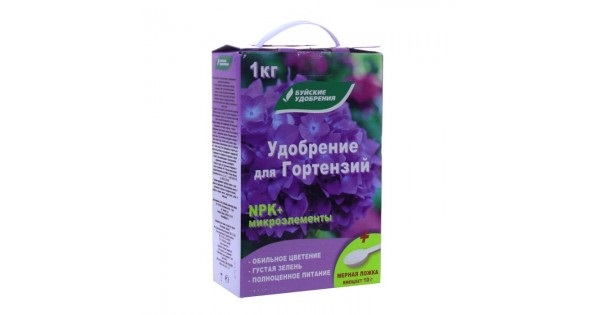
Calcium preparations reduce acidity by interacting with aluminum
These substances help to free the soil from aluminum salts, which increase acidity. To make the soil neutral, never use baking soda.
Preparations with calcium do not lead to an alkaline reaction. Only by reacting with aluminum, a salt is formed that is soluble in water - calcium chloride. Aluminum, on the other hand, precipitates during the interaction. This leads to an increase in alkali and neutralization of soil acid. This takes some time.
Note! In order for the agent to act faster, you need to use substances of a finer grinding. They are better absorbed and therefore act earlier.
The approximate amount of substance per 1 m² is 200 g. It is also affected by the acidity level that needs to be reduced.
Hydrangea is a beautiful graceful plant that can decorate both a garden plot and the interior space of a house and apartment. Its peculiarity lies in changing the color of flowers, depending on the level of acidity of the soil. By increasing the acidity, you can get beautiful blue shades, and by decreasing it - pink, lilac. The decorativeness of the plant makes it one of the favorites in landscape design.
vote
Article Rating
What kind of soil does hydrangea like: the main indicators of the soil
Before planting, you need to choose a suitable place and prepare the soil for the hydrangea. He must meet the following criteria:
- be nutritious;
- have sufficient lightness;
- good moisture permeability;
- have a certain acidity.
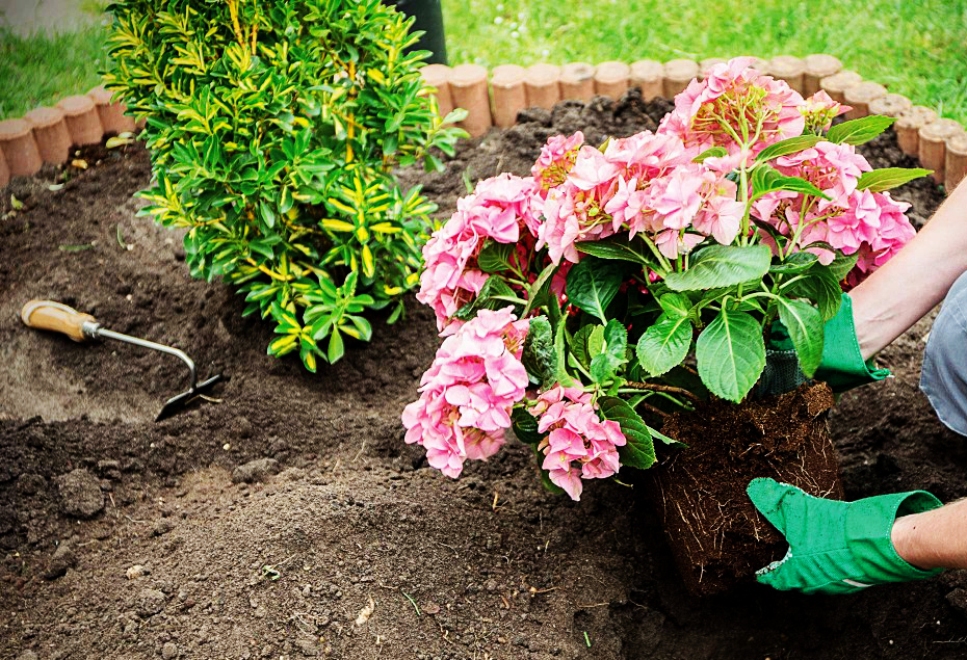
Transplanting flowers
If the land does not meet all the requirements, the hydrangea will develop poorly or simply die.
Important! The plant will tell itself that the soil is not good enough. There will be few flowers on it, and those that bloom will quickly fade
In addition, the leaves may curl and fall off.
In order to correctly read the signals given by the hydrangea, the florist needs to monitor its condition and periodically inspect the bushes.
In order to find out in more detail what kind of soil is needed for hydrangea, you should study all the requirements for it.
Acidity
First of all, for normal growth, it is necessary that the soil has a medium acidic level (pH 5.5). If this figure is too low, the plant will change the color of the leaves. In this case, additional acidification may be required. But, not knowing the acidity that a given soil composition has, it is better to abandon the introduction of lime and other ingredients that affect this indicator.
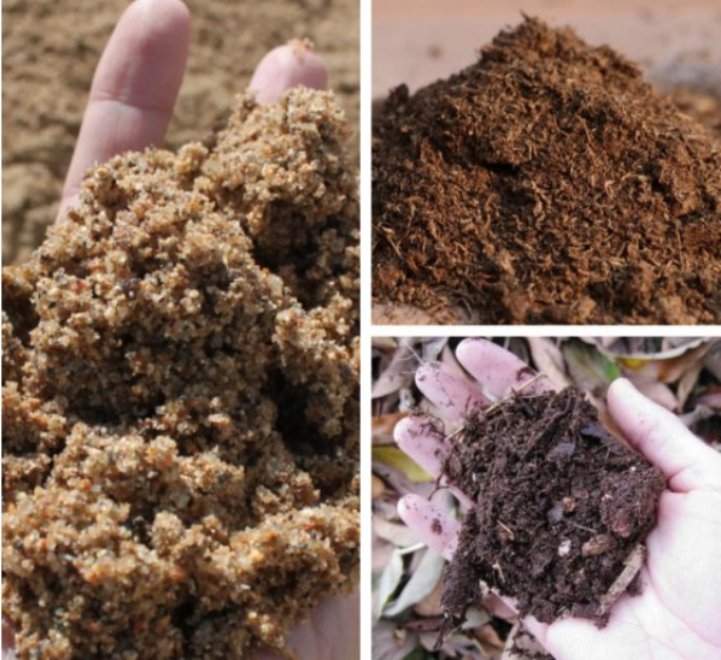
Soil preparation
After carrying out a special test and identifying the problem, it is recommended to use ready-made solutions of organic origin or a homemade acidifier made up of food acids such as citric, malic or acetic acid to normalize the acidity level.
You can prepare an acidic solution by mixing the selected component with water in the proportion: 1 tablespoon of the active ingredient in a bucket of water.
You can measure the acidity level of the soil using a special device that is sold in gardening stores.
Lightweight and breathable
First of all, the soil for the hydrangea should be light enough to allow air access to the plant's roots. For this purpose, chernozem with a high structure density is not suitable.
For reference! You can make the soil easier by adding sand, sheeting, or fine gravel.
Humidity
Good water permeability of the soil layer ensures lush flowering of the bush. Hydrangea loves moisture very much and the area where it is planted should not be arid.
To maintain the desired moisture level during the growth of the culture, soil mulching is carried out in the perimeter close to the stem. It is recommended to do this immediately after planting in the ground.
Nutritional value
It is equally important that the soil for the hydrangea is nutritious. To increase the fertility of the soil, mineral and organic compounds are used, created by hand or purchased in specialized stores.
Ready fertilizers are good because, in addition to providing normal nutritional value, they are able to regulate the acidity of the soil layer
To increase the fertility of the soil, mineral and organic compounds are used, created by hand or purchased in specialized stores. Ready fertilizers are good because, in addition to providing normal nutritional value, they are able to regulate the acidity of the soil layer.
Important! It should be remembered that the high acidity of the soil will affect the hydrangea inflorescences with a bluish tint. If the medium is neutral, then the petals will have a yellowish color.
An increased alkaline background will give a pink sheen. Many owners use this property to periodically change the color of the hydrangea.


